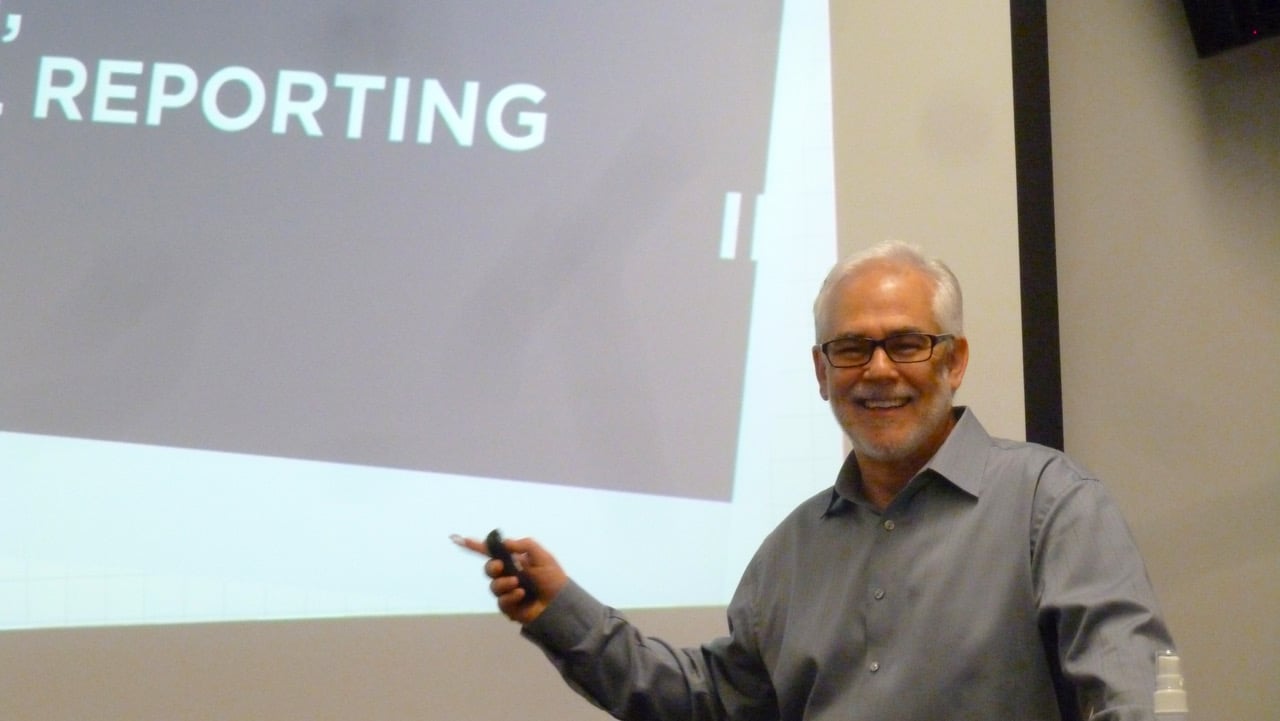Where is fundraising in your CEO’s to-do list?
“You better start swimming or you’ll sink like a stone” — Bob Dylan
Public media aren’t sinking like a stone, but a relentless, growing tide of competition for eyes and ears is lapping around us, threatening the system’s viability.
Among professionals in the field, the consensus response is that public broadcasters must become indispensable local institutions.
The system of locally operated broadcast operations still gives public broadcasting a unique status in the media landscape. But with technology changing every few months and media consumers developing keener appetites for interaction, public television and radio must engage their audiences and communities in new ways.
Our challenge is to catch up with competitors who are offering a more interactive — and less transactional — relationship with our present and potential audiences. Our opportunity is that we still have programming and other attributes that in many cases are more valued and trusted than those of our competitors.
While we proceed to give stations a firmer local grounding, how can we pay for the implied improvements in local service? From the start, public media have depended on small donations and on-air pledging as their main source of non–tax-based support from the start, but it appears that kind of philanthropy has taken us as far as it can. Indeed, with flat or declining audiences, we can expect less small-donor support.
A major opportunity is still open to public broadcasting, however: With some exceptions, we’ve never sought significant major-donor support.
Passing the test with major donors, of course, would give additional evidence that our stations are worth supporting. They don’t just happen to be located in communities but are parts of communities.
To meet that standard, local public media must transform from internally focused organizations that schedule national content to externally focused ones that also build and sustain local relationships and generate significant local content — along with significant major-donor support.
The kind of leaders needed to drive this transformation are energetic change agents who can understand and communicate the significance of public media to our communities’ civic and cultural health and generate organizational movement and financial support for this mission. They are not just media organization managers but also community leaders.
This amounts to a major challenge to our current leaders: Either grow into the new job description or get out of the way.
Some general managers are gamely taking on the enormous task of changing not only their organizations, but themselves as well.
The recently completed CPB-funded Public Television Major Giving Initiative emphasized the importance of CEOs’ fundraising and alliance-building roles, and the just-announced radio version, DEI’s Leadership for Philanthropy initiative, will preach the same message.
Station boards were finding it hard enough to find executives with the traditional managerial and media skills. By expecting candidates to have this additional area of competence, the stakes are higher for boards to strike the right balance of talents in their new hires.
It’s the dichotomy thing. On the one hand, boards want an inward-focused, operational wizard who will supervise the development, programming and technical functions for optimal performance. On the other hand, a station needs to have an externally oriented rainmaker effective at fundraising and friendraising.
In public TV, the hill may not be as steep to climb. Because of the bigger budgets, the inside and outside roles are often given to two executives, the CEO and the COO. In public radio, stations often ask a single person to juggle the two tasks and not let any balls drop.
Over the past several years, Livingston Associates has interviewed hundreds of board and staff members at public radio and television organizations. We’ve given them a multiple-choice ballot and asked them to vote on the characteristics needed in a station CEO today.
While development experts are urging CEOs to become the top fundraisers at stations, it’s amazing that fundraising aptitude and skills don’t even make the top 10 among the qualities that board and staff members want in their next chief execs, except for a brief mention under “Community Building.”
This may reflect the discomfort of our leaders — many who have streaks of idealism, narrow or wide — with the difficulties of fundraising and with the profit-centered thinking that can compromise and undo nonprofits as well as investment banks. Station boards and managers give highest priority to the qualities of leadership and vision, along with integrity and industry knowledge, when considering candidates for CEO positions.
After weighting, counting and combining the most highly desired executive qualities as voted on by more than 400 board and staff members from 10 searches conducted in the last three years, we’ve been able to rank the traits to reflect the views of board members and station staffs. A high level of consensus emphasizes traits described in Daniel Goleman’s book Emotional Intelligence.
- Leadership — Inspires and enrolls others in fulfilling the organization’s shared mission. Comfortable with self and others.
- Vision — Comprehends the big picture. Grasps dynamics and trends affecting public media and local community. Projects those trends into the future and imagines how they can be used or overcome.
- Industry knowledge — Understands how public media work, the macro- and microdynamics affecting them, including audience demographics, technology, content and resource generation.
- Integrity — Trustworthy, authentic and courageous. Holds clear, high standards for self and others. Can identify, confront, analyze and resolve ethically ambiguous issues and potential or real conflicts of interest for self and others in the organization.
- Communication — Dynamic, sincere, inspiring and respectful communicator. Adapts style to audience. Skillful listener and effective spokesperson. Adept at speaking, writing and alternative ways to deliver a message.
- Problem-solving and decision-making — Understands and effectively pursues decision-making processes, evaluating the significance of issues, identifying stakeholders to include in the processes and information needed to reach conclusions.
- Community relationships — Externally focused, collaborative relationship builder. Effective fundraiser. Has a presence in the community, recognized as part of civic leadership.
- Strategic focus — “Connect the dots” person who grasps the role of strategy in organizational life, chooses effective routes to personal and organizational objectives. Expert in strategic, business and operating planning.
- People manager with people skills — Team-builder, coach and mentor. Effectively manages the people of an organization, including production (what we do) and finance (revenue, expense, control). Can adjust leadership style as needed — collaborating, enrolling, delegating and directing as required by the situation.
- Passion — An authentic individual. Understands and is committed to the missions of the organization and of public media. Communicates passion in a way that is understood and acted on by staff, board and community.
The baby boom retires
The job of chief executive is getting harder as a generation of experienced managers moves toward retirement. Just as it has repeatedly through the past six decades, the baby boom will rock the country — this time by leaving the workforce.
Public media leaders are retiring en masse. In a 2007 membership survey, public radio’s University Station Alliance found six out of 10 general managers reported they would retire or change jobs in the next five years.
While losing a generation of managers, public media also will face dramatically stiffer competition for qualified successors from every other economic sector.
“For the years spanning 2007 to 2016 [nonprofits in the United States] will need to attract and develop a total of 640,000 new senior managers—or the equivalent of 2.4 times the number currently employed,” Thomas Tierney predicted in the summer 2006 Stanford Social Innovation Review. By Tierney’s estimate, that’s “the equivalent of recruiting more than 50 percent of every MBA graduating class at every university across the country, every year for the next 10 years.”
But hiring senior managers with the traditional business skills and credentials, such as an MBA, may be only part of the solution. Managers with strong social skills and diverse work experiences will also have opportunities.
As a national institution, public media has the chance to establish a strategy for succession planning that not only tests the wisdom of local leaders but also draws on the experience of the entire system. Leadership training, more pervasive a decade ago in public broadcasting, is once more a good and smart investment.
The high turnover in managerial jobs at all levels will create openings to remake more of our station leadership to “look like America.” Women and minorities have taken more leadership roles at stations in recent years, but in a field with a slow-growing workforce, progress has been incremental. The demand for a new generation of managers with diverse skills should open greater opportunities for women, minorities and younger workers in public media’s 21st-century economy.
Tom Livingston heads Livingston Associates, a Baltimore-based firm that provides executive-search, strategy consulting and coaching services. He opened the firm 10 years ago after 21 years as a public radio manager, most recently as GM at WETA-FM in Washington, D.C. Email: tom@livingstonassociates.net






